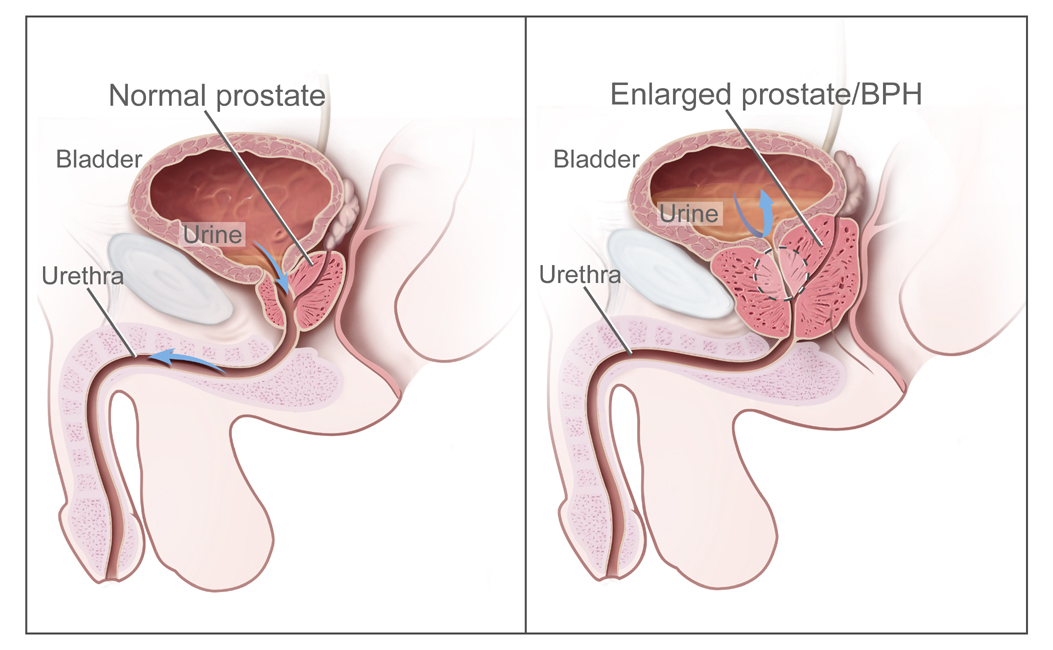BPH is an acronym for Benign Prostatic Hyperplasia:
- benign - noncancerous
- prostatic - in prostate
- hyperplasia - multiplication of cells
 |
| Left - normal prostate Right - prostate with BPH Source Wikimedia Commons and NCI
BPH starts early and insidiously, usually in the 40's with an incidence proportional to age. That means that a 50 year old man has about a 50% chance of having BPH. Therefore, in general, BPH is an issue of when it will happen rather than if it will happen.
|
Why is BPH a problem?
As the prostate enlarges it closes the voiding channel. This can cause urinary symptoms including frequency, urgency, hesitancy, feelings of incomplete emptying, nighttime urination. BPH can also cause urinary tract infections, urinary retention, hematuria, and even kidney damage.
Please see this prior blog post for more info on urinary symptoms.
Therefore, BPH can affect a man's physical health and quality of life.
What causes BPH?
One significant factor in prostate growth is the male hormone testosterone, or more specifically dihydrotestosterone (DHT). DHT goes into prostate cells and causes an increase in cell multiplication. Though male hormones are a big factor, medical science has not identified all the factors that are involved in prostate hyperplasia. Identifying other mechanisms for this disease process are breakthroughs waiting to happen.


